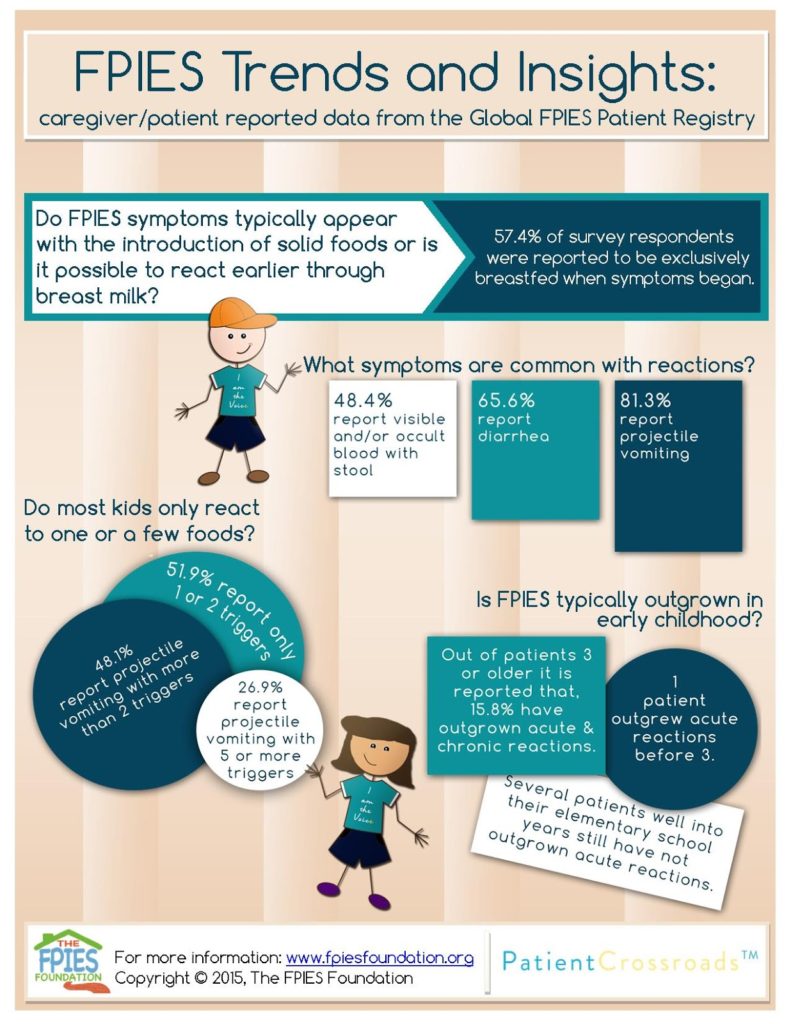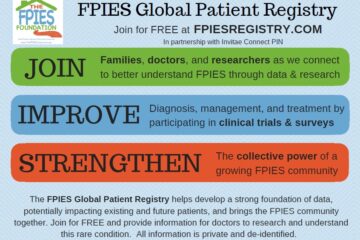FPIES Trends and Insights:
Caregiver/Patient Reported Data from the Global Patient Registry
By Hilary Lagerwey
 For four years now we have been working on collecting data from FPIES patients across the world using our Global Patient Registry from Patient Crossroads, a leading registry platform among rare diagnosis.
For four years now we have been working on collecting data from FPIES patients across the world using our Global Patient Registry from Patient Crossroads, a leading registry platform among rare diagnosis.
First of all, we want to say a big thank you to those who have already filled out the survey with valuable information! There are several good studies out there describing what FPIES looks like, and our goal is to supplement that research with up to date information gathered from an even larger pool of families that we are able to reach using this tool. We hope that this information proves immediately valuable to families and doctors who are managing this diagnosis on a daily basis. We also hope to provide some insights to researchers that might prompt further study.
Anyone who fills out the survey has access to all of the cumulative data so feel free to browse and analyze for yourself, but today, in honor of Global FPIES Day this month (Oct.14th!) we thought we would share some of the insights we’ve gleaned so far. We recognize that since we are collecting data by voluntary responses some of our information may look skewed as compared to a more random sample; however we know that these results are important to share and that they represent a significant portion of FPIES families.
If you haven’t filled out the survey yet, please do so! The more data we have the more we can learn. The more information we can give to doctors and researchers, the more we can advance research to benefit all families living with FPIES. Here is a look at what our data says about some frequently asked questions:
Do FPIES symptoms typically appear with the introduction of solid foods and formula or is it possible to react through breast milk?
57.4% of survey respondents reported exclusive breastfeeding when symptoms began.
Is FPIES typically outgrown in early childhood?
Out of patients 3 or older in our survey data, 15.8% report outgrowing acute reactions. 1 patient reported is under 3 and reported already outgrowing acute reactions. Several patients well into their elementary school years state that they still have not outgrown acute reactions.
*Also out of patients 3 or older, 15.8% report outgrowing chronic reactions.
50% of those who report outgrowing acute reactions report still experiencing GI symptoms with previously reactive foods.
Do most kids only react to one or a few foods?
Out of those who report projectile vomiting with reactions, 51.9% stated this occurs with only 1 or 2 triggers vs. 48.1% who stated they experience projectile vomiting with more than 2 triggers.
26.9 report projectile vomiting with 5 or more triggers.
What symptoms are common with reactions?
81.3% report projectile vomiting
65.6% report diarrhea
48.4% report visible and/or occult blood with stool
Thank you to FPIES Mom and FPIES Foundation volunteer, Hilary Lagerwey for compiling this survey data.
Graphic created by FPIES Mom and FPIES Foundation volunteer, Melissa Rice.


